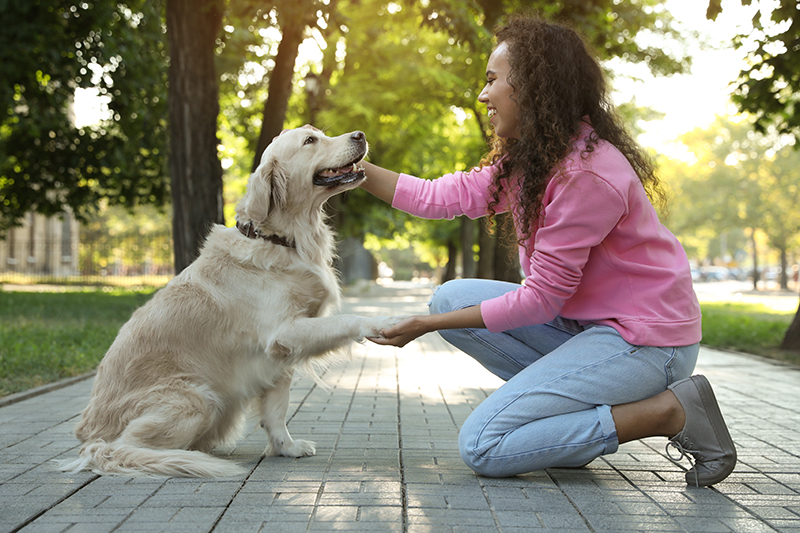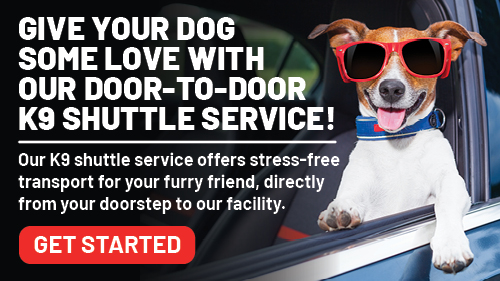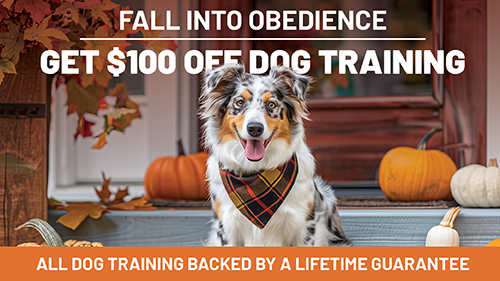
You’ve mastered the basics—sit, stay, heel, recall—and your dog is well-behaved under everyday circumstances. But for experienced dog owners looking to deepen their bond and challenge their canine companions, advanced obedience training offers a valuable next step.
At Top Dog Training & Resort, our advanced programs focus on off‑leash control, multi‑step commands, agility integration, focus conditioning, and structured progression. Whether you want your dog to reliably obey in stimulating environments or to become more confident and engaged, advanced training builds on core skills and elevates them into polished, real‑world performance.
Off‑Leash Control: Freedom With Reliability
Off‑leash obedience is the hallmark of advanced training. It demands deep trust, impeccable timing, and strong recall—even in high‑distraction settings.
Key components include:
- Reliable recall from distances and with distractions
- Off‑leash stays in busy or outdoor environments
- Directional commands like “left,” “back,” or “go here”
- Emergency whistle or whistle‑recall for added safety
By practicing controlled escalation—from the backyard to dog parks to city sidewalks—you develop a strong bond and consistency that lets your dog enjoy roaming freedom safely.
Complex Commands and Sequence Training
Advanced obedience often involves chaining commands into sequences, akin to doggy choreography. Multi-step commands elevate focus, responsiveness, and cognitive engagement.
Examples include:
- “Heel, sit, stay”: Walk, sit at a mark, and hold until released
- “Recall, bump, auto‑sit”: Come, bump chest with trainer hand, and automatically sit
- Directional game: Navigate cones or markers using verbal and gesture cues
These exercises help dogs transition from rote commands to adaptive obedience—and keep their minds sharp.
Agility and Obstacle Integration
Agility isn’t just about fun—it reinforces impulse control, body awareness, and handler communication. Introducing basic agility elements enhances obedience through active engagement.
Elements in our advanced program include:
- Tunnel entries and exits
- Short jumps with proper approach and landing
- Pause tables where dogs hold position before continuing
- Weave poles for focus and direction changes
Combining obedience and agility conditions a dog to remain attentive amid motion and novelty—ideal for busy neighborhoods, canine sports, or active homes.
Focus Exercises and Distraction Training
A well-trained dog must maintain attention even in stimulating environments. Focus training disciplines the mind, helping dogs tune into their handler despite surroundings.
Core exercises:
- Eye contact drills: Reward quick attention even in high-distraction zones
- Leave-it and watch: Teach dogs to ignore tempting stimuli and stay engaged with the owner
- Duration holds: Build longer stays and waits with gradual increases in time and distractions
- Response to sudden distractions: Training with movement, wildlife, or toys to test impulse control
These exercises improve mental resilience and reinforce trust—your dog learns that attention equals reward, even when excitement abounds.
Training Progression: From Foundation to Mastery
At Top Dog Training & Resort, our training progression is designed to meet your dog where they are—whether just mastering the basics or ready for complex tasks. We guide dogs step-by-step from foundational cues to advanced obedience, adjusting the pace based on their learning style. For busy pet parents, our convenient dog pickup service ensures your pup stays on track with their lessons, even when your schedule is full. It’s all about consistent, positive reinforcement—at your dog’s ideal pace.
Here’s how advanced training builds upon fundamentals:
- Foundational cues (sit, down, stay) → Mastered in quiet environments
- Contextual proofing: Practice in busier settings, around visitors, or with other dogs
- Off‑leash work: Begin in controlled areas, build up to public spaces
- Complex chaining and sequencing: Add multi-step tasks for mental fitness
- Agility and distraction conditioning: Add motion, novelty, and multi-sensory input
Training progression is individualized. Some dogs move quickly; others require more repetition. The goal is skill consolidation, not just speed.
Benefits of Advanced Obedience Training
Advanced obedience training delivers more than just trick-level performance—it transforms partnership:
- Greater freedom: your dog can run off‑leash with confidence
- Improved communication: subtle cues and direction become part of your bond
- Mental satisfaction: complex training stimulates your dog’s brain
- Behavior reliability: fewer mishaps, more predictable responses
- Enhanced safety: in emergencies or outdoor excursions, your dog responds instantly
Plus, it deepens the rhythm of your connection—training becomes a positive, enriching experience.
Light Uses of Bullet Points for Clarity
Throughout your training, prioritize:
- Clear, consistent cues
- Short, frequent sessions to maintain motivation
- Positive reinforcement for focus and compliance
- Proofing in gradually challenging environments
- Tracking progress with notes or video logs
These habits ensure progress is measurable and sustainable over time.
When to Consider Professional Training
Advanced exercises can feel daunting without guidance. At Top Dog Training & Resort, we recommend professional support when:
- Your dog has reached a plateau or distraction threshold
- You’d like expert form correction or chain-building assistance
- You want access to structured environments (fields, tunnels, safe spaces)
- You value customized feedback and gradual progression
Trainers help fine-tune your approach, pace lessons appropriately, and prevent common errors.
Conclusion
Advanced obedience training is more than teaching flashy commands—it’s about deepening the bond between you and your dog while unlocking their full potential. Whether you’re working on off-leash reliability, agility, or mastering complex tasks, this next level of training brings structure, confidence, and joy to your dog’s daily life.
At Top Dog Training & Resort, we’re committed to helping you and your canine companion grow together through expert-led, personalized training. Let’s build a confident, obedient, and happy dog—one step at a time.
Ready to take the next step in your training journey? Contact us today to create a customized advanced obedience plan for your dog.
SCHEDULE A MEET AND GREET
Thank you for loving him!
While there, he did have a medical event which came as a surprise to everyone, I received a call explaining the situation and a suggested course of action. Being overseas there was little I could do. Again, Jenny and the Top Dog staff stepped up going beyond the call for Loki. Today, we picked him up, healthy and very happy and I cannot express enough gratitude for the amazing care, play and training these folks did for Loki. You guys are awesome!
Update: 3/15/24 Elodie is still going here and extremely excited when we pull in their driveway. I wish I could add more stars to their review! This past week was Elodie’s second birthday. They threw her a little birthday pawty and gave her a doggie cookie-cake! I updated the photos to show a screenshot of a video they provided to me. I’m so pleased with their care of my fur baby ❤️
FAQs (Frequently Asked Questions)
Most dogs are ready at 12–18 months, once basic manners are reliable. Puppies can begin foundational chaining earlier, but intense focus work is best when maturity arrives.
Short, focused sessions 2–4 times per week work best. Consistency matters more than duration. Even ten minutes of concentrated practice builds progress.
Yes. While working breeds may take to it naturally, most dogs—regardless of breed—can benefit from mental stimulation, focus training, and structured challenge.
Timeline varies. Some dogs grasp chaining and focus within weeks; others take a few months. Progress is steady when training is consistent and positive.
Take it slower. If frustration surfaces, reduce complexity, reinforce known commands, and always end sessions on a positive note. Break tasks into smaller achievable steps.
Definitely. Off-leash control, impulse control, and focus training reduce problem behaviors by reinforcing calm, reliable responses and clearer communication.



